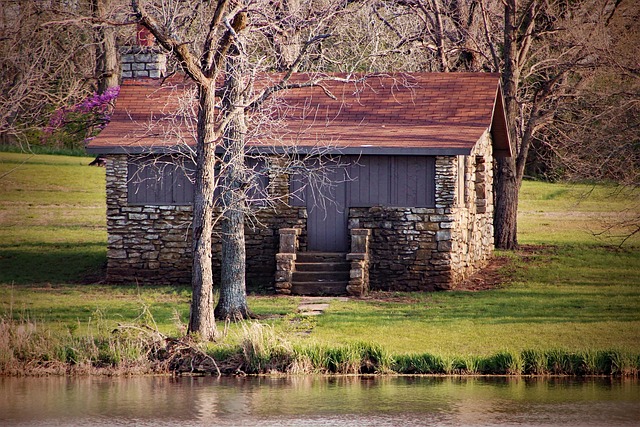Eco-friendly home upgrades, including sustainable home improvements like energy-efficient appliances, renewable energy solutions (e.g., solar panels), and eco-conscious building materials, significantly reduce electricity consumption and carbon emissions. Water-saving fixtures, such as low-flow showerheads and dual-flush toilets, also contribute to conservation. Thoughtful environmentally friendly remodeling can transform homes into models of sustainability, offering long-term savings on utility bills while benefiting the environment. Key areas for improvement include insulation, air sealing, LED lighting, renewable energy sources like solar panels, water-saving fixtures, and sustainable building materials during remodeling projects.
In today’s digital era, the quest for sustainability has shifted focus to our homes. Reducing carbon footprints through eco-friendly upgrades is not just a trend but a necessity. This comprehensive guide explores various facets of making your home greener. From understanding current energy and water usage to implementing renewable energy solutions, we provide step-by-step strategies. Discover how eco-conscious building materials, energy-efficient projects, and water-saving fixtures can create a comfortable, sustainable living space while contributing to a healthier planet.
Eco-Friendly Home Upgrades: The Foundation of Sustainability
Eco-friendly home upgrades are not just trends; they’re foundational steps toward sustainability and a greener future. These sustainable home improvements, such as installing energy-efficient appliances and lighting, can significantly reduce electricity consumption. Green renovation ideas like transitioning to renewable energy solutions, whether through solar panels or wind turbines, further cut down carbon emissions, making homes more environmentally friendly.
When remodeling, opting for eco-conscious building materials is crucial. Materials like recycled steel, bamboo, and reclaimed wood not only minimize the environmental impact but also offer unique aesthetic appeal. Water-saving home fixtures, including low-flow showerheads and dual-flush toilets, are other effective projects that conserve water resources without compromising comfort. Environmentally friendly remodeling, when done thoughtfully, can transform homes into havens of sustainability.
– Understanding your current energy and water usage
Before jumping into eco-friendly upgrades, understanding your current energy and water usage is crucial. Simple steps like reviewing your utility bills and checking smart meters can provide insights into areas where improvements are most needed. Many modern homes already come equipped with smart thermostats and sensors that help track and optimize energy consumption, making it easier to identify inefficiencies.
For water conservation, assessing fixtures and appliances in your home can reveal significant opportunities. Upgrading to low-flow showerheads, water-efficient toilets, and aerated faucets are effective green renovation ideas that can substantially reduce water usage without compromising on performance. These energy-efficient home projects not only contribute to a smaller carbon footprint but also lead to long-term savings on utility bills, making them smart choices for environmentally conscious homeowners looking into sustainable home improvements or renewable energy solutions.
– Key areas for improvement in an average home
In an average home, several key areas present significant opportunities for improvement to reduce the carbon footprint and embrace eco-friendly living. One of the most impactful places to start is the insulation and air sealing. Proper insulation in attics, walls, and floors can dramatically improve energy efficiency by reducing heat loss during winters and heat gain during summers, thereby lowering reliance on heating and cooling systems. Air sealing, which involves plugging gaps around doors, windows, and other openings, prevents unwanted air exchange, enhancing overall energy conservation.
Additionally, transitioning to renewable energy solutions is a powerful step towards sustainability. Installing solar panels or considering wind power can help generate clean energy for the home, reducing dependence on traditional electricity sources that emit carbon dioxide. Other green renovation ideas include swapping regular light bulbs with LED ones, which use up to 80% less energy; installing water-saving home fixtures like low-flow toilets and showerheads; and using eco-conscious building materials during remodeling projects. These sustainable home improvements not only benefit the environment but can also lead to long-term cost savings for homeowners.
Sustainable Home Improvements: A Step-by-Step Guide
Upgrading your home to reduce its environmental impact is easier than you think. Here’s a step-by-step guide to help you navigate the process, focusing on practical and eco-friendly solutions that will not only benefit the planet but also enhance your living space.
Start by evaluating your current energy usage with a home energy audit. This will pinpoint areas for improvement and suggest specific green renovation ideas. For instance, consider switching to energy-efficient appliances, LED lighting, and smart thermostats to slash electricity bills and reduce your carbon footprint. Next, explore renewable energy solutions like solar panels or wind turbines suitable for your property, leveraging the power of nature to meet your energy needs. When it comes to water conservation, install water-saving home fixtures, such as low-flow toilets and faucets, addressing a significant contributor to household water usage. Lastly, opt for eco-conscious building materials during any remodeling project, from sustainable flooring options like bamboo to recycled or locally sourced insulation, ensuring both durability and environmental friendliness.
Adopting eco-friendly home upgrades is a powerful way to reduce your carbon footprint and contribute to a greener future. By understanding your current energy and water usage and focusing on key areas for improvement, you can transform your home into an efficient and sustainable space. Following a step-by-step guide and incorporating green renovation ideas, such as renewable energy solutions, eco-conscious building materials, and water-saving fixtures, allows you to create a more environmentally friendly living environment. These sustainable home improvements not only benefit the planet but also often lead to long-term cost savings, making it a win-win for both your wallet and the environment.
